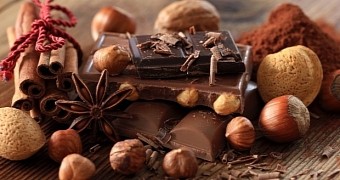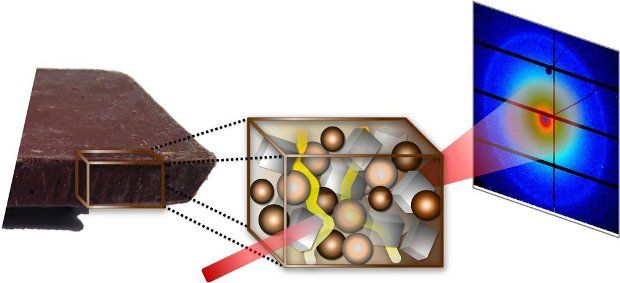You know how chocolate sometimes forms an icky-looking white layer on its surface? Well, that layer is called fat bloom and is made up of lipids migrating out of it.
Since it's basically fat, this white layer is not in the least harmful. You were going to eat it anyway, except you wouldn't have seen it, had it not worked its way atop your favorite chocolate bar.
To better understand the formation of fat bloom, a team of scientists with the Hamburg University of Technology in Germany put chocolate in an X-ray machine.
How chocolate ends up looking like it's gone bad
Writing in the journal Applied Materials and Interfaces, the researchers explain that chocolate gains a white layer on its surface when it comes to contain liquid fats.
The Hamburg University of Technology team details that, when in liquid form, the fat in chocolate easily moves through pores and builds up at the surface, where it crystallizes.
Interestingly, it appears that even a small drop of liquid fat is enough to dissolve more crystalline lipid structures and make them move towards the surface, thus creating a thicker layer of fat bloom.
“Over a period of hours, the liquid fat dissolves additional crystalline lipid structures, which makes the entire structure of the chocolate softer. This in turn increases the migration of lipids,” explains study main author Svenja Reinke.
At room temperature, about a quarter of the lipids contained in chocolate are in liquid form. Keep the chocolate exposed to high temperatures even for a short while, and fat bloom is bound to form.
As tasty as they might be, evidence indicates that extra ingredients like fillings and nougat have negative impact on chocolate in that they speed up the process that forms fat bloom.
The problem can easily be solved, scientists promise
Now that they know how chocolate ends up looking white instead of a rich brown, the researchers hope to figure out a way to halt the process and save thousands of bars from ending up in trash bins.
They recommend that chocolate makers try reducing the porosity of their products to keep liquid fat from migrating to the surface. Having the fat crystallize in chocolate in more stable forms could also help.
The goal is to prevent people from being wasteful and throwing away perfectly good chocolate simply because it doesn't look flawless.
“Although fat blooming is perfectly harmless, it causes millions in damage to the food industry as a result of rejects and customer complaints,” study leader Svenja Reinke wished to stress.

 14 DAY TRIAL //
14 DAY TRIAL // 

